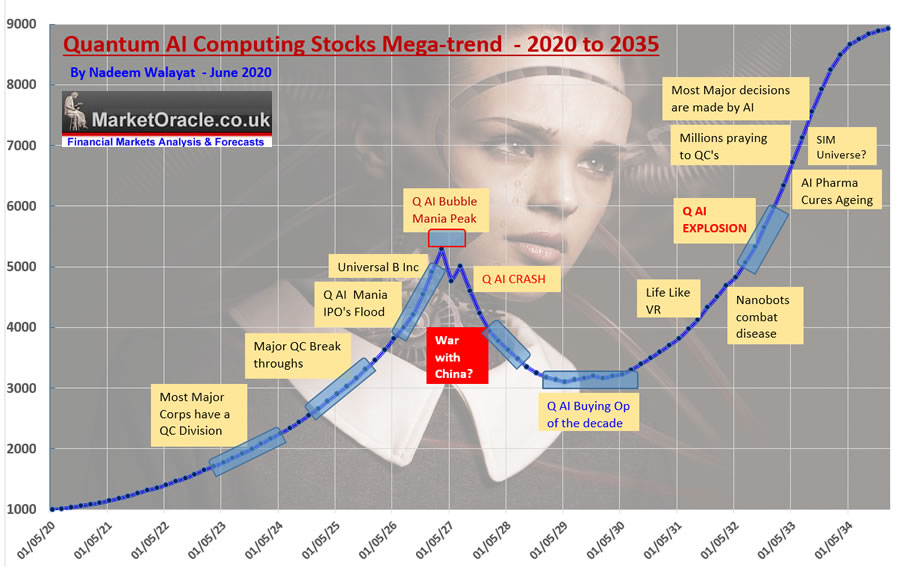20 Handy Ideas For Picking Ai Trading Sites
20 Handy Ideas For Picking Ai Trading Sites
Blog Article
Top 10 Tips On How To Evaluate The Accuracy And Performance Of Ai Stock Predicting And Analyzing Trading Platforms
To ensure that you're making use of a platform that is capable of delivering reliable predictions and insights It is crucial to evaluate the accuracy and effectiveness of AI stock-predicting and analyzing platforms. Here are the top 10 suggestions to assess these platforms efficiently:
1. Backtesting Results
What to look for: Find out whether a platform offers backtesting capability to determine the accuracy of its predictions on previous data.
The reason it is important: Backtesting can aid in confirming the AI models accuracy by comparing their predictions against real-world outcomes.
Search for platforms that allow you to customize backtesting parameters.
2. Real-Time Performance Monitoring
What to Look Out For What happens to the platform in real-time situations.
Why it Matters: The real-time performance of the platform is an more reliable indicator than historical backtesting.
Utilize a free trial or demo account to track and compare the accuracy of real-time forecasts to the actual market movements.
3. Prediction Error Metrics
What should you look for What metrics should you be looking for? Examine metrics like mean absolute error, root-mean squared error or Rsquared to quantify predictions accuracy.
Why is it important: These metrics are a quantitative way to measure how closely the predictions correspond to actual results.
Tip: Platforms that publicly disclose these measures are more transparent.
4. Ratio of Success and Win Rate
What to look for: Check the platform's win rate (percentage of correct predictions) and the success rate (profitability of trading basing on forecasts).
What is important: High success rates and win rates indicate better accuracy in predicting and greater chance of generating profits.
Tip: Be cautious of platforms that claim unrealistic winning rates (e.g. 90%) %+), since no system is perfect.
5. Benchmarking Market Indices
What to look out for Check the platform's predictions and performances to major market indices, like S&P 500 or NASDAQ.
What is important because it helps determine whether this platform outperforms (or is underperforming) the wider market.
Look for consistency in performance, not just gains over a short amount of time.
6. The sameness across Market Conditions
What to look for What to Look For: Examine how the platform performs in different market conditions (bull markets or bear markets, high volatility).
What is important The platform that is robust must perform well in all market conditions and not only when the market is in good shape.
Tips: Use the platform during volatile times or when the market is in a downturn.
7. Transparency in Methodology
What to look for How to recognize AI algorithms and models (e.g. reinforcement learning and neural networks, reinforcement learning, etc.).
Why It's Important: Transparency allows you to examine the scientific and technological reliability of a system.
TIP: Beware of platforms that use "black box" models without explaining how they generate predictions.
8. User Reviews and Tests by Independent Parties
What to Look for When choosing a platform Check out the feedback of other users and search for tests that are independent or independent evaluations.
Why It Matters The independent reviews and tests provide unbiased insights into the platform's accuracy and performance.
Tips: Search for comments on forums like Reddit, copyright or financial blogs.
9. Risk-Adjusted Returns
What to look for You should look for risk-adjusted measures like the Sharpe Ratio (or Sortino Ratio), to evaluate the platform's performance.
Why It Matters The metrics are used to measure the amount of risk required to achieve returns, providing more complete information about performance.
Sharpe ratios (e.g. over 1) suggest a higher risk-adjusted rate.
10. Long-term Track Record
What to look for: Determine the platform's overall performance over the period of time (e.g. 3 to 5 years).
The reason it's important Why it's Important: Long-term performance is a more reliable gauge of reliability when in comparison to results from short-term.
TIP: Don't use platforms that show only temporary or limited results.
Bonus Tip Test using Demo Account
Demo accounts or trial versions let you test the platform's predictions in real-time without the risk of putting your money at risk. You can evaluate the reliability and accuracy of the platform in real-time.
Follow these tips to thoroughly assess the accuracy, efficiency, and the reliability of AI stock prediction and analysis platforms. It is then possible to select the platform that best aligns with both your trading goals and your level of risk. Remember that no system can be perfect. Combining AI knowledge with your studies is the best method to choose. Have a look at the most popular copyright financial advisor for more examples including free ai trading bot, coincheckup, ai stock picker, copyright financial advisor, free ai trading bot, stock market software, ai stock prediction, ai trade, ai investment advisor, ai stock picker and more.
Top 10 Tips On How To Evaluate The Speed And Latency Ai Technology For Predicting And Analyzing Stocks
Speed and latency is an important factor to consider when looking at AI stock prediction/analyzing trading platforms. This is especially important for high-frequency traders, algorithmic traders and active traders. A delay of just milliseconds can be detrimental to trade execution. Here are ten of the most effective methods to determine the speed and the latency of platforms.
1. Real-Time data feeds can be used to evaluate the accuracy of your real-time data
Data delivery time: The platform should deliver real-time, accurate information within a short period of time (e.g. with sub-millisecond delay).
Closeness of the data source: Find out whether servers are near major exchanges.
Data compression - Ensure that the platform is using efficient data compression techniques to increase data delivery speed.
2. Test the speed of trade execution
The time it takes to process your order is the time that your order is processed and executed by the platform.
Direct Market Access: Confirm that the exchange you use offers DMA. DMA is a feature which allows you to send orders directly to exchanges, without intermediaries.
Look for more detailed reporting on execution that includes timestamps as well as confirmations of the order.
3. Review the responsiveness of the Platform
Speed of the user interface (UI): Measure how fast the platform's user interface responds to your inputs.
Updates to charts: Check that charts and visualisations update in real-time, with no lag.
Performance of mobile apps If you are using a mobile app, make sure that it's at the same speed as a desktop version.
4. Check for low-latency network infrastructure
Server locations: Make sure the platform uses low-latency servers located near major exchanges or financial hubs.
Co-location services: Find out whether your exchange offers this option. This allows you to host trading algorithm on servers close to the exchange.
High-speed networks: Determine if the platform uses fiber-optic networks with high speeds or other low-latency technologies.
5. Backtesting and Evaluation of Simulation Speed
Find out how fast your platform is able to analyse and analyze past data.
Simultaneous trade simulation: The platform should be capable of simulating trading in real-time without apparent delays.
Parallel processing: Determine whether the platform uses distributed computing or parallel processing to speed up complex calculations.
6. Examine API Latency
API response time determining how quickly the platform’s API responds (e.g. fetching market data, or placing orders).
Rate limits. Examine the rates of the API in order to avoid delays during high-frequency trading.
WebSocket: Check whether the platform supports WebSocket protocols which permit streaming data in real time with minimal latency.
7. Test the stability of your platform using Load
High-volume trades: To test the platform’s flexibility and stability, try simulated high-volume scenarios.
Market volatility: Ensure that the platform can manage price fluctuations in times that are high-risk.
Stress testing: Check whether the platform has tools to test your strategies under extreme circumstances.
8. Examine the network and connectivity
Internet speed needs. Make sure that your connection speed is sufficient to reach the recommended speed of the platform to achieve the best performance.
Redundant connections: Find out if the platform has redundant internet connections in order to avoid interruptions.
VPN latency: If you are using a VPN be sure to check if it introduces significant latency, and if the service provides alternatives.
9. Look for Speed Enhancement Features
Pre-trade analyses The platform must provide pre-trade analysis to help optimize order routing and execution speeds.
Smart order routing (SOR) is also referred to as smart order routing is a method to determine the most speedy and efficient execution locations.
Utilize the tools of the platform to analyze and monitor latency in real-time.
Review User Feedback and Benchmarks
User feedback: Read reviews of users to evaluate the performance of the platform in terms of the speed of its operation and latency.
Third-party benchmarks from third-party. You can find benchmarks from independent sources, or reviews that compare a platform's speed with other platforms.
Testimonials and case studies Find out whether there are any case studies that demonstrate the low-latency capabilities of the platform.
Bonus Tips
Trial period for free: Test the platform's speed and latency in real-world scenarios by using an online demo or trial.
Customer support: determine if the platform has assistance with issues related to latency or for optimization.
Hardware requirements: Determine whether you require special hardware to get the best performance (e.g. high-performance computers).
Utilizing these guidelines you can precisely assess the speed, latency and precision of AI stock prediction/analyzing trading systems. This allows you to select a system according to your specific needs in trading and minimize any delays. Trading platforms with low latency are essential for high-frequency algorithmic traders. Small delays can negatively affect their earnings. See the most popular ai stock trading app examples for site tips including best stock analysis app, ai stocks, stock market software, chart ai trading, stock market software, canadian ai stocks, best ai for trading, trading ai bot, ai stock trading app, ai stock price prediction and more.